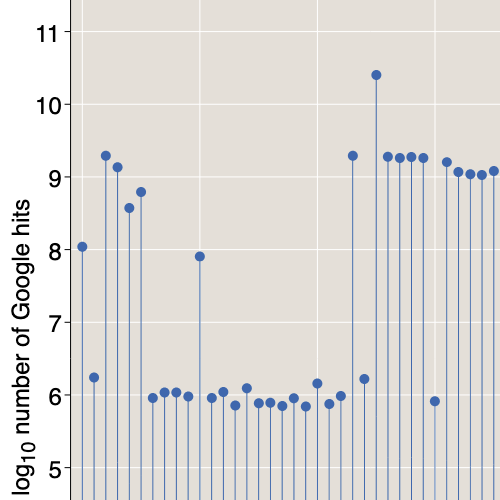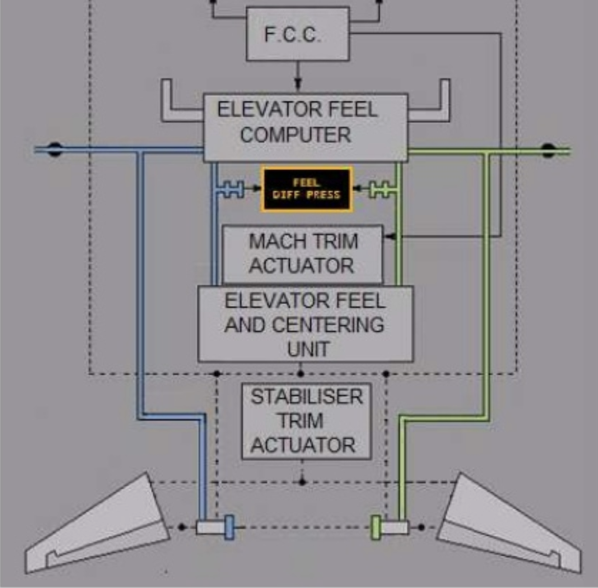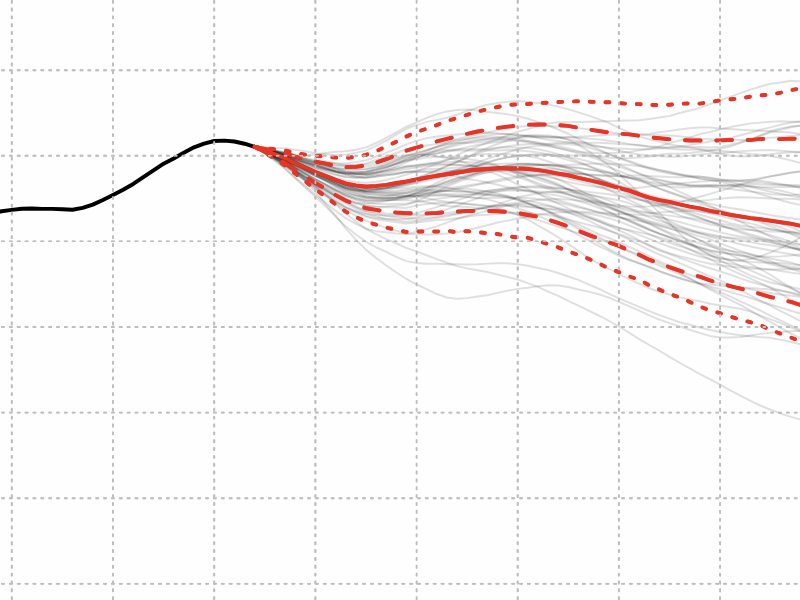Boidland
by Brian Hayes
Published 2 November 2007
Above: A throbbing, wheeling mob of several thousand restless starlings, near a strip mall in Clayton, North Carolina, 27 October 2007. Below: Snow geese on maneuvers near Ashburn, Missouri, 12 November 2004.
In the 1930s, Edmund Selous argued that flocking behavior could be explained only through some form of animal ESP: “thought transference” was the only way that birds could communicate their intentions quickly enough to coordinate their movements. Others suggested there must be some designated leader along the birds, a conductor or drill sergeant whose cues the rest of the flock followed. By the 1980s a much simpler view emerged. Flocking birds (and also schooling fish and swarming insects) could maintain their formations without any need for leaders or a synchronizing central authority if each individual followed a few simple rules.
This idea of a leaderless flock with distributed intelligence was proposed by several authors at about the same time, but the version that made the biggest splash came from Craig J. Reynolds, whose famous “boids” made their premier just 20 years ago, at the SIGGRAPH meeting in 1987. The simulation was described in a paper in the conference proceedings, and the source code is also available online. The program comes to about 3,000 lines of Lisp, written in the Zetalisp dialect of the Symbolics Lisp machine. These days, you can achieve the same effect with much less effort in multiagent programming environments such as StarLogo, NetLogo and breve.
All of the boids in a flock were guided by the same three rules:
- Separation: Avoid collisions, and try to equalize distance to nearest neighbors.
- Alignment: Turn to match the average heading of nearby boids.
- Cohesion: Move toward the mean position (or center of mass) of the flock.
When I first saw boids in action, I found them marvelously lifelike. Now, after spending a fair amount of time playing with models of this kind, I find the concept so familiar and so thoroughly internalized that I have a hard time seeing flocks in any other context. As I stand at the edge of an autumn field with clouds of starlings swirling around me, I think: How boidlike they are! Just as earlier observers were sure they saw leaders in the flock, or signs of spooky avian brainwaves, I can’t help seeing Separation, Alignment, Cohesion.
This weekend I am off to Florida to observe the self-organizing rituals of another flock. I’m attending the annual meeting of Sigma Xi, the society that publishes American Scientist. I’m at the meeting mainly to cheer friends who will be inducted as honorary members of the society. But it’s also interesting to observe how any such flock orients itself and chooses a direction for the future.
Publication history
First publication: 2 November 2007
Converted to Eleventy framework: 22 April 2025



